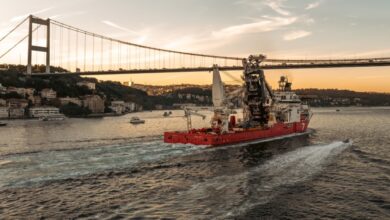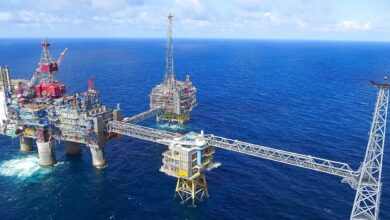Conference panel session engages audience to consider MPD, future applications
Session moderator Mr Stone began by providing a review of the current status of MPD: Its benefits include mitigating drilling hazards, decreasing NPT, extending or eliminating casing points, and allowing drilling of “undrillable” wells. Its variations include constant bottomhole pressure (CBHP), pressurized mud cap drilling (PMCD), health, safety and environment (HSE), and dual gradient drilling (DGD). Of these, the panel believes that DGD holds the most potential for improvement, Mr Stone said.
DGD is not an entirely new concept, and it was created for abnormally pressured or sub-pressure wells and ultra-deep/deepwater wells. The pump method of DGD includes riserless “pump & dump,” riserless mud recovery and subsea mud lift. The first two address tophole applications while the third targets sections below the BOP. Both of the dilution methods – gas injection and mud injection – take place after the BOP is installed.
Whichever method is used, however, the objective remains the same: to gain flexibility downhole so the pressure profile can be tailored.
Two of the most significant challenges remaining in dual-gradient drilling are the dynamic nature of the well (well doesn’t want to remain static) and well control. “If we don’t answer every single issue with well control, we’re not going to get approval from regulators anywhere,” Mr Stone said.
Panelists later fielded questions from the audience on MPD applications and challenges. Among several topics, emergency disconnects were addressed, in both single-gradient and dual-gradient situations. Mr Smith noted that a dual-gradient system is inherently “much, much safer.” With seawater filling the riser using a pumping technique, we’re exactly mimicking the pressure that’s naturally there. “When the riser disconnects, that well is still dead, even if the BOP doesn’t close. The mud column below the mudline is what keeps that well in check,” he explained.
Commenting on industry implementation of MPD techniques, Mr Kozicz noted that Transocean has been involved in several mud cap drilling variations offshore, as well as five or six constant bottomhole pressure MPD applications offshore. Feedback from rig crews have been positive. “They’re a little bit concerned at first. Implementing these techniques is a bit of an unknown for a lot of the guys on the rigs … but within a tour or two, they never want to go and drill those problematic wells any other way.”
A project is also ongoing to develop a dilution-based dual-gradient system for application offshore, he added.
Mr Durkee said that Anadarko is already “doing dual-gradient drilling on a daily basis with our ‘pump and dump.’ ” It was initially used “for shallow water flows or gas flows, trying to get your 20-in. casing as deep as you can,” he explained. Next, wellheads were enlarged and enabled having three instead of two casing strings riserless. That has led to completing in their surface casing string as deep as possible before installing the BOP.
“Now we’re talking about the next step,” he said. “Where do we go from here in terms of what we know today?”
For this panel and audience, perhaps there was no clear answer to that question yet, and Mr Stone acknowledged that parts of the discussion involved concepts that are still “pie in the sky.”
“But I hope that this has generated some questions in your mind,” he said.




